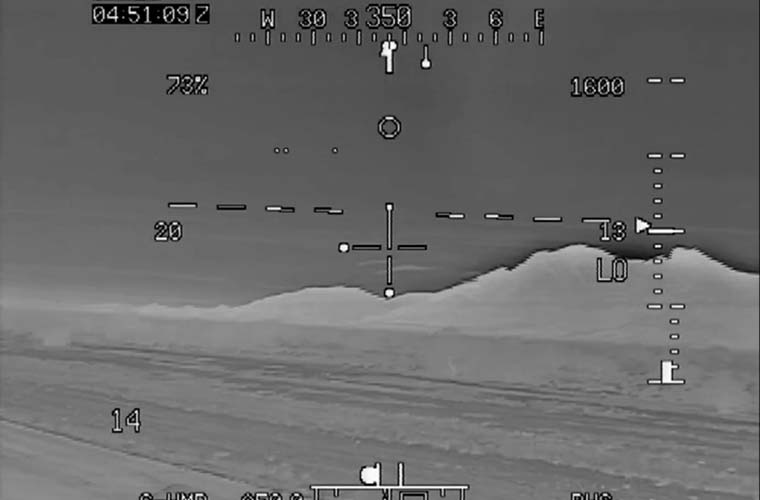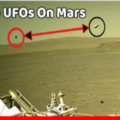Newly released video and direct testimony from a former Customs and Border Patrol (CBP) agent reveal that, much like U.S. Navy pilots who say they have regularly encountered unidentified aerial phenomena (UAP), law enforcement officials defending America’s borders are also encountering unusual aerial objects with surprising frequency.
According to sources The Debrief has interviewed, these incidents include encounters with aerial objects that appear to perform maneuvers well beyond the capabilities of conventional aircraft. Some of these events, which were also captured on video, have left a number of veteran pilots and other personnel questioning the nature and origin of these objects.
Now in an exclusive to The Debrief, a former CBP agent is breaking his silence, offering significant details about his own experience with UAPs while patrolling the Mexican-American border. This, along with experiences and videos shared with him by fellow CBP and Department of Homeland Security officials, and his efforts to set up a process within the CBP for pilots and agents to report their sightings.
For much of the last century, people have reported seeing strange objects in America’s skies. Sometimes appearing to maneuver at considerable speeds and without discernible means of propulsion, these unidentified aerial phenomena, more commonly known as UFOs, have remained an enduring mystery; one that ignores cultural and ideological boundaries with the same disregard they appear to show for territorial borders.
In recent years, the dialogue surrounding this long-taboo topic has been significantly elevated, particularly among lawmakers and defense officials in Washington. Several incidents, a majority of them reported in recent years by U.S. Navy personnel, have prompted questions about whether drones and sophisticated surveillance platforms operated by foreign adversaries–or perhaps something else entirely–could be involved in these aerial incursions into U.S. airspace.
Based on preliminary intelligence assessments, UAP-related legislation, official Pentagon investigative offices, and recent congressional hearings, one might get the impression that UAP incidents are entirely limited to America’s sprawling defense and intelligence apparatus.
Yet people from virtually all walks of life have claimed to have bewildering sightings of these aerial interlopers. And as some former government officials have recently told The Debrief, when it comes to U.S. government and UAP, the Department of Defense is hardly the only show in town.
“It’s not just the DoD encountering this stuff,” says Robert “Bob” Thompson, a recently retired Department of Homeland Security Agent.
In an interview with The Debrief, Thompson recounted how one of the roles he took on as a federal agent with U.S. Customs and Border Patrol’s Tucson Sector Special Operations Group involved establishing the reporting requirements for Unexplained Aerial Phenomena within the Tucson Sector.
According to Thompson, just like the military, a number of these bizarre incidents involving UAP have been captured on sophisticated government systems, normally tasked with catching drug smugglers or staving off the flow of illegal immigration.
“We have guys out there 24/7 with their eyes to the sky looking for smuggling, but they see other stuff,” said Thompson. “I talked to dozens and dozens of agents that all had similar stories of seeing bizarre stuff, of having encounters with UAP.”
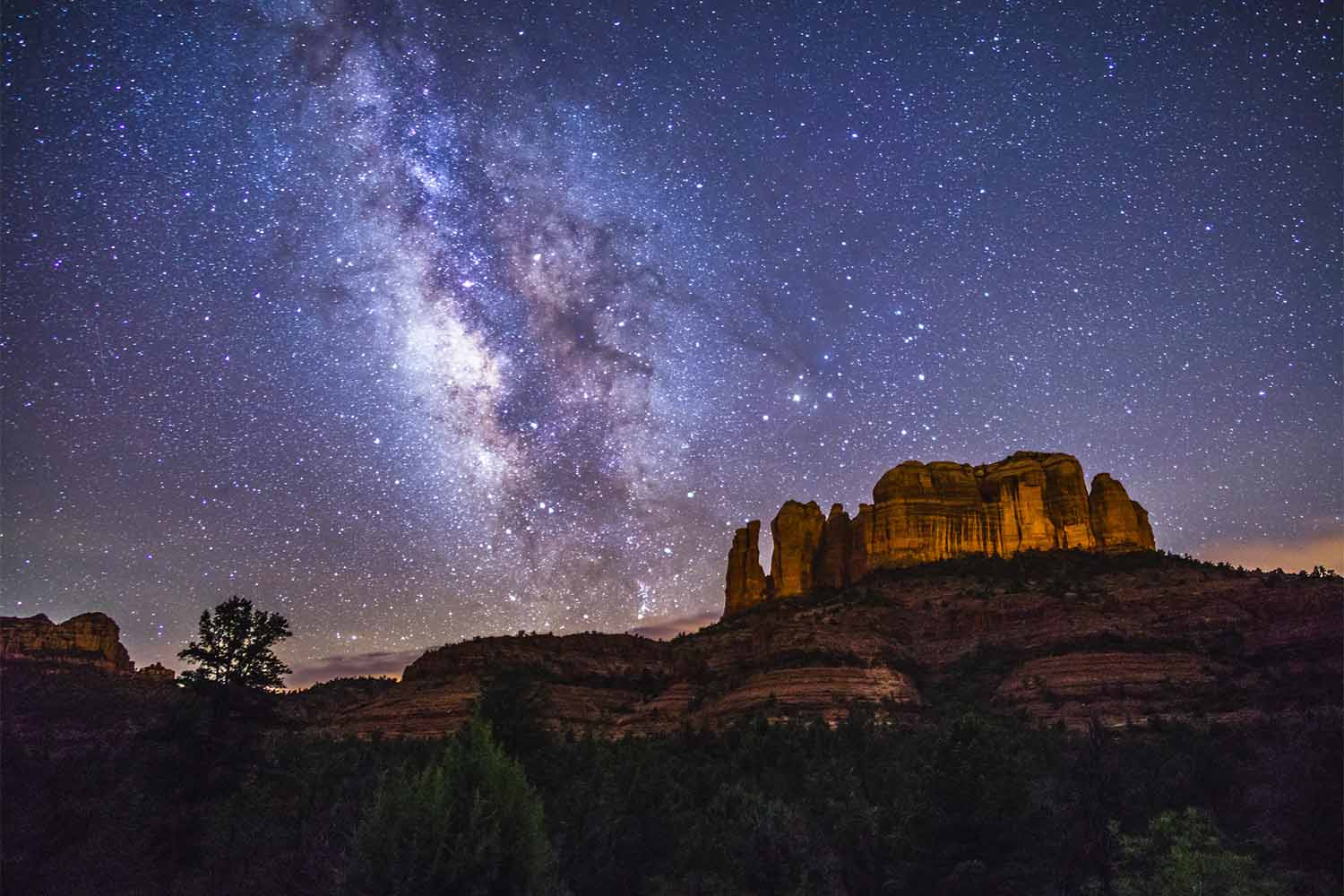
After serving for 11 years with the U.S. military and a stint with a Tucson area Fire Department as a Paramedic and Hazmat Technician, Thompson began his career with the U.S. Customs and Border Protection Agency in January 2008.
As a federal law enforcement agent, Thompson would go on to spend the next 14 years guarding America’s southern borders, ultimately earning a spot on the Tucson Sectors Special Operations Detachment Mobile Response Team (MRT.)
“I gravitated, you know, almost right off the bat to the special operations side,” Thompson told The Debrief.
“As always, you just want to surround yourself with the best,” he said. “100% out for excellence all the time. I got on to what they call our mobile Response Team, which is one of the three tiers that make up the Border Patrol Special Operations Detachment.”
Within the Special Operations Detachment the primary focus was counter terrorism, counter weapons of mass destruction proliferation, and drug interdiction.
From 2020 to 2021, Thompson worked in the newly created Arizona Air Coordination Center, which was to become the brain for Air Operations within the Tucson Sector. While tasked in the center, Thompson worked on other projects including helping redesign the sector’s antiquated 911 system and redesigning reporting requirements for regular tracking of statistics for air support operations.
“Flying was kind of my forte. My responsibility was mainly helicopters, and some of the other aerial platforms that we work with and other partner agencies that we work with,” said Thompson in a phone call with The Debrief. “I was also a paramedic too. In fact, I was the senior paramedic, for all of the Border Patrol. I’d get pinged a lot as a subject matter expert when it comes to emergency management and preparation, emergency medicine, and counterterrorism.”
However, along with his official duties with the DHS, Thompson began investigating UAP sightings he learned about from within the agency, even collecting videos and images of bizarre encounters captured by sophisticated government systems.
“There’s other people that have concerns about [these objects] as well. You know, like it may be a foreign adversary,” said Thompson, describing them as “genuine objects that I couldn’t explain.”
Although Thompson admits to having a long-time interest in UFOs, it was only after the 2017 revelations of a quasi-secret Pentagon program, the Advanced Aerospace Threat Identification Program (ATTIP), that he said he realized the DHS could provide equally valuable information in the organized study of UAP. Thompson said he began producing an “Issue Paper” in an effort to improve reporting and guidance for agents encountering UAP along the southwest border.
“Tucson Sector Border Patrol (TCA) in conjunction with the Tucson Air and Marine Branch needs to develop a program to be able to Report, Identify, Catalog, and if needed; Interdict Unexplained Aerial Phenomena (UAP) that are encountered along the Southwest Border,” Thompson wrote in the document, a copy of which was obtained by The Debrief.
“Whether or not some of these objects pose a threat to American Interests is not clearly understood and by establishing reporting requirements, it may serve as an early warning system for emerging threats when combined with technology assets already in place by DHS.”
A February 9, 2021 encounter by the Tucson Police Department Air Support unit with an object that “defied known drone/SUAS characteristics,” was highlighted in the document. The craft, described as a “highly modified drone,” was able to outmaneuver helicopters operated by both the Tucson Police Department and U.S. Customs and Border Protection.
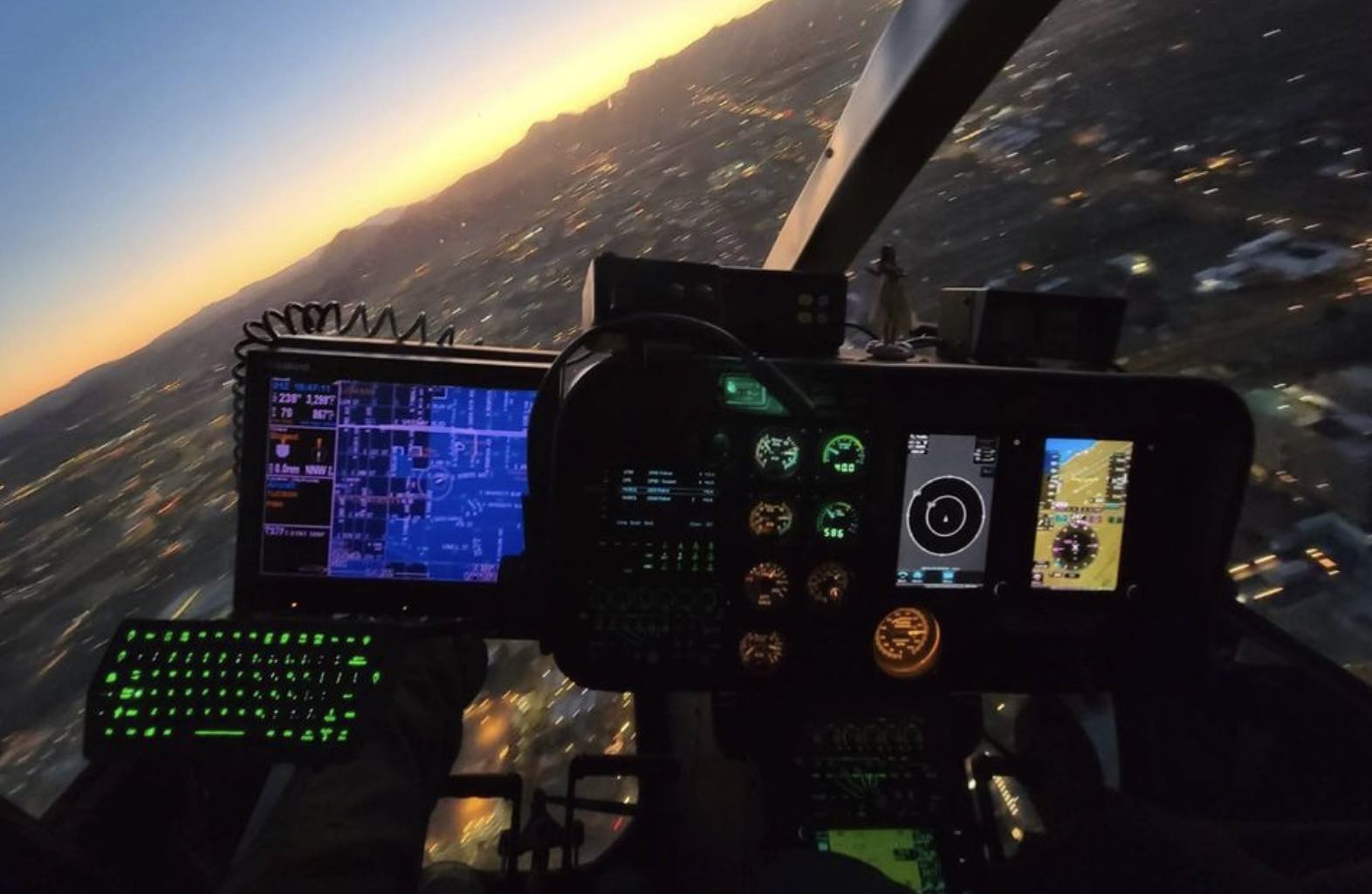
“This thing went on for 45 minutes over the city of Tucson,” Bob told The Debrief. “It was doing circles around (the police helicopters) then went up to 14,000 (ft).”
“Could [it] be something Raytheon related?” Thompson asked. “Absolutely. Could it be, you know, a Chinese drone doing some scouting? Absolutely.”
While trying to convince senior leadership to take the issue seriously, Thompson put the word out to the DHS aviation community that he was interested in any UAP encounters they might have had.
Continuing to carry out his full time duties at a DHS air coordination fusion center, it wasn’t long before Thompson says a stream of DHS and National Guard pilots started sharing accounts of encounters with aerial objects they could not identify. In some instances, the objects were also recorded on video by aircraft equipped with advanced imaging systems.
One striking example, made public now for the first time, depicts three fast-moving unidentified aircraft captured by the sophisticated targeting/imaging system of an Army AH-64 attack helicopter.
Captured by one of the U.S. military’s flagship attack helicopters close to midnight on November 6, 2018, roughly 40 miles northwest of Tucson, Arizona, the video appears to show several unidentifiable objects maneuvering unlike any known aircraft.
“Wow! Are those three really fast moving jets up there?” exclaims the Apache helicopter’s co-pilot and gunner as three objects suddenly appear, dashing across the sky as the aircraft prepares to take-off.
“Probably. Probably some A10’s or some F-16s,” the Apache’s pilot replies, before admitting, “but, I’m not looking up there.”
Although difficult to discern from the video alone, the three unknown aircraft initially appear to be flying in a loose triangular formation.
The co-pilot continues to follow the three objects with the aircraft’s multi-sensor imaging system, the Target Acquisition Designation Sight/Pilot Night Vision Sensor (M-TADS/PNVS).
“The M-TADS/PNVS’s advanced FLIR sensors enable Army Aviation Warfighters to see first, understand first, act first and finish decisively on the tactical battlefield,” reads a fact sheet provided by the system’s manufacturer, Lockheed Martin. The sophisticated Apache Aviator Integrated Helmet (AAIH) worn by the aircrew allows the nose mounted IR imaging sensor to follow a pilot’s head movements.
As they approach the foothills of nearby Picacho Peak, the three unknown objects suddenly appear to rotate around each other, as if revolving around an unseen axis, all while maintaining a steady eastward trajectory.
After several rotations, the objects then resume an obtuse triangular formation before speeding out of sight as the Apache begins to take off.
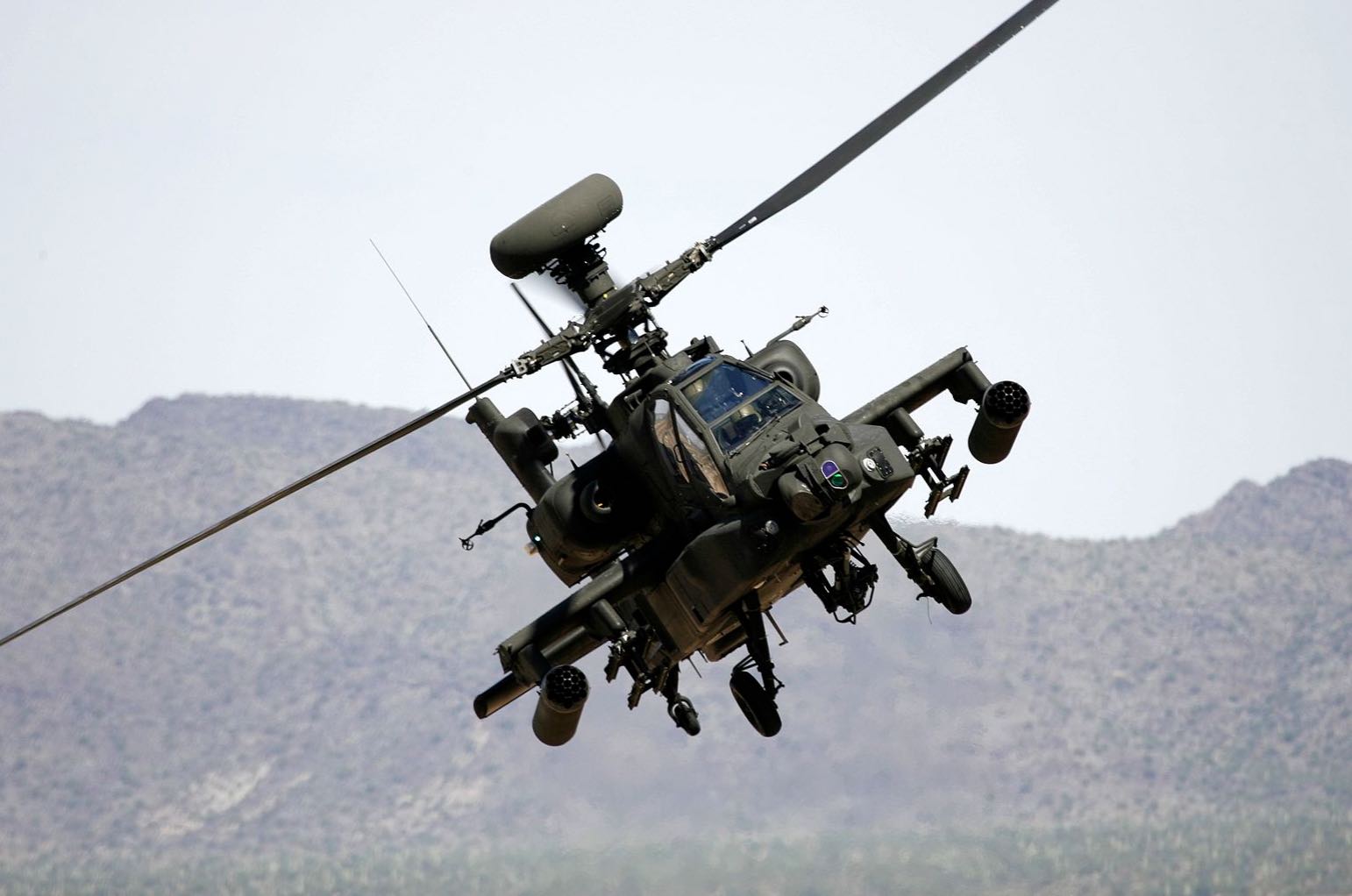
Although the encounter only lasted a few seconds, the unusual maneuvers conveyed in the video suggests it could represent the first publicly available imagery of UAP displaying highly-unconventional flight characteristics, captured by military sensor systems.
To verify the video’s authenticity, The Debrief was able to obtain a complete, unedited copy of the imagery captured by the Apache’s gun camera during the entirety of its flight.
According to the Federal Aviation Administration (FAA), unless there is a known air safety accident or incident, radar tracking information, air traffic control tape recordings, and data communications are only retained for 45 days.
Because the incident is more than three-years old, The Debrief was likewise unable to obtain any automatic dependent surveillance-broadcast (ADS-B) transponder data from commercial aircraft tracking sources, capable of revealing any information on other aircraft that were operating within the vicinity at the time of the sighting.
It was noted that in the video the Apache pilot can be heard interacting with air traffic control and requesting permission to take off. There is no mention by air controllers to the pilots of any other aircraft operating in the area.
A check with aeronautical charts of the area using SkyVector.com also failed to provide any obvious clues, such as designated flight paths, low-level air-traffic lanes, or military operational areas that might help account for the objects.
In a video call with The Debrief, former U.S. Air Force fighter pilot Chris Lehto said the objects certainly have the appearance of being anomalous.
“It looks like three definite objects, but at a distance. The first thing that stands out to me is the rate of acceleration,” said Lehto, who spent 20-years in the Air Force flying F-16s and holds a Masters degree in aeronautical science.
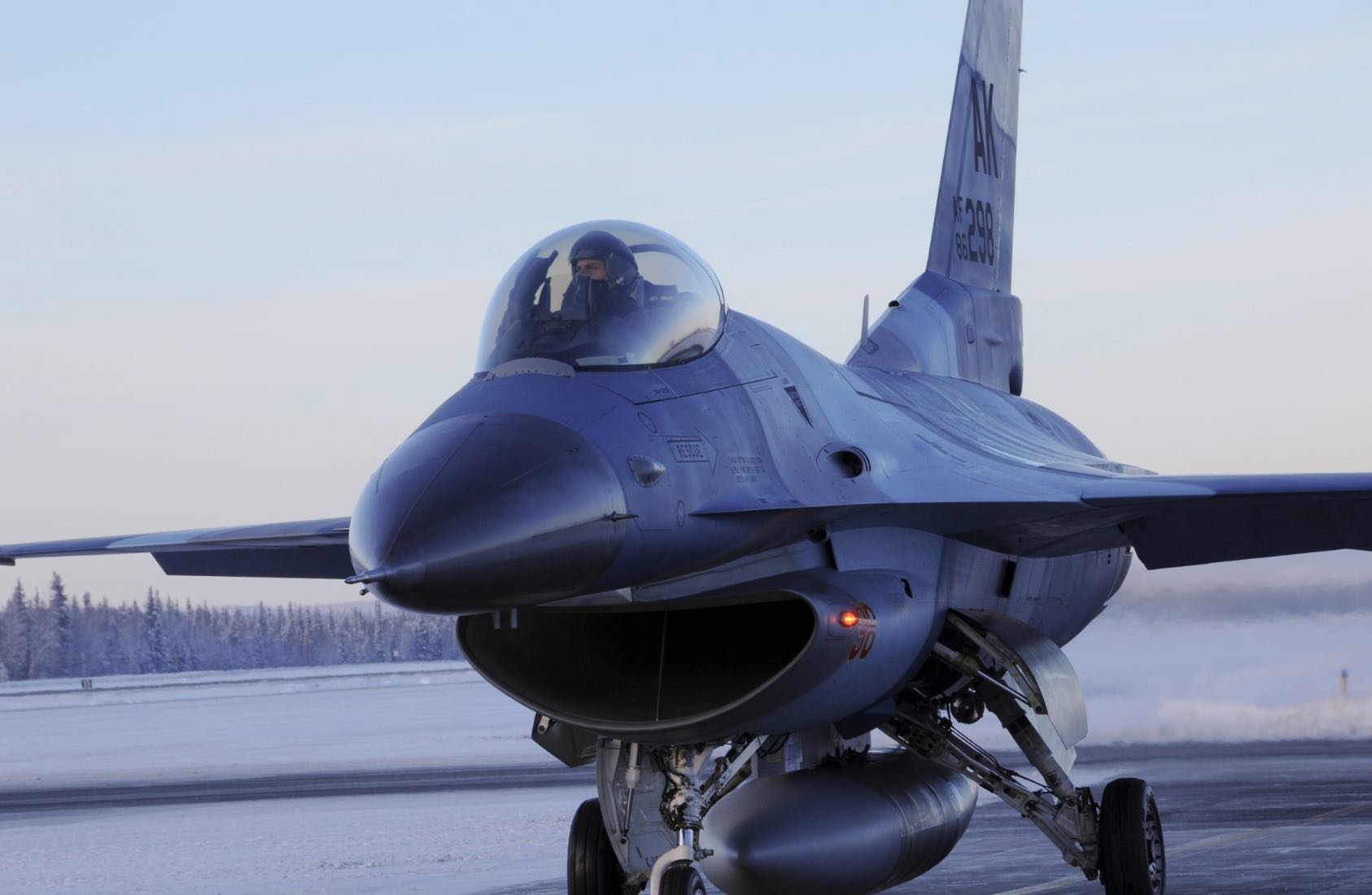
“If you see an airline out a distance, you’re just expecting it to move a certain amount of distance in a certain amount of time. Especially as a pilot, you just, you build that out more and you’re used to looking at planes and assessing how far away they are. And looking at objects, your brain just gets more and more attuned to that,” Lehto explained.
“And when I looked at this, the rate of acceleration just doesn’t make sense for any objects… I’ve seen in my life, as a pilot.”
Lehto says the objects appear to be moving faster than what he would expect to see even from high-performance aircraft, such as an F-16 or F/A-18 fighter jet.
“Without a doubt. I mean things do move that fast, but they’re constant because when they’re moving that fast they have a very large radius of curvature when they turn just based on centripetal force acceleration to be going that fast,” said Lehto.
When it comes to the bizarre sudden rotations, Lehto said, “How they fly, it doesn’t feel mechanical to me. They’re changing altitudes and headings, or it just doesn’t feel like how we would fly, how I would fly a plane. Basically, at a certain altitude maybe you’re descending, but you’re descending to go somewhere.”
“It’s just kind of willy nilly flying around,” said Lehto. “It just kind of gives me more of an organic rather than mechanical feeling.”
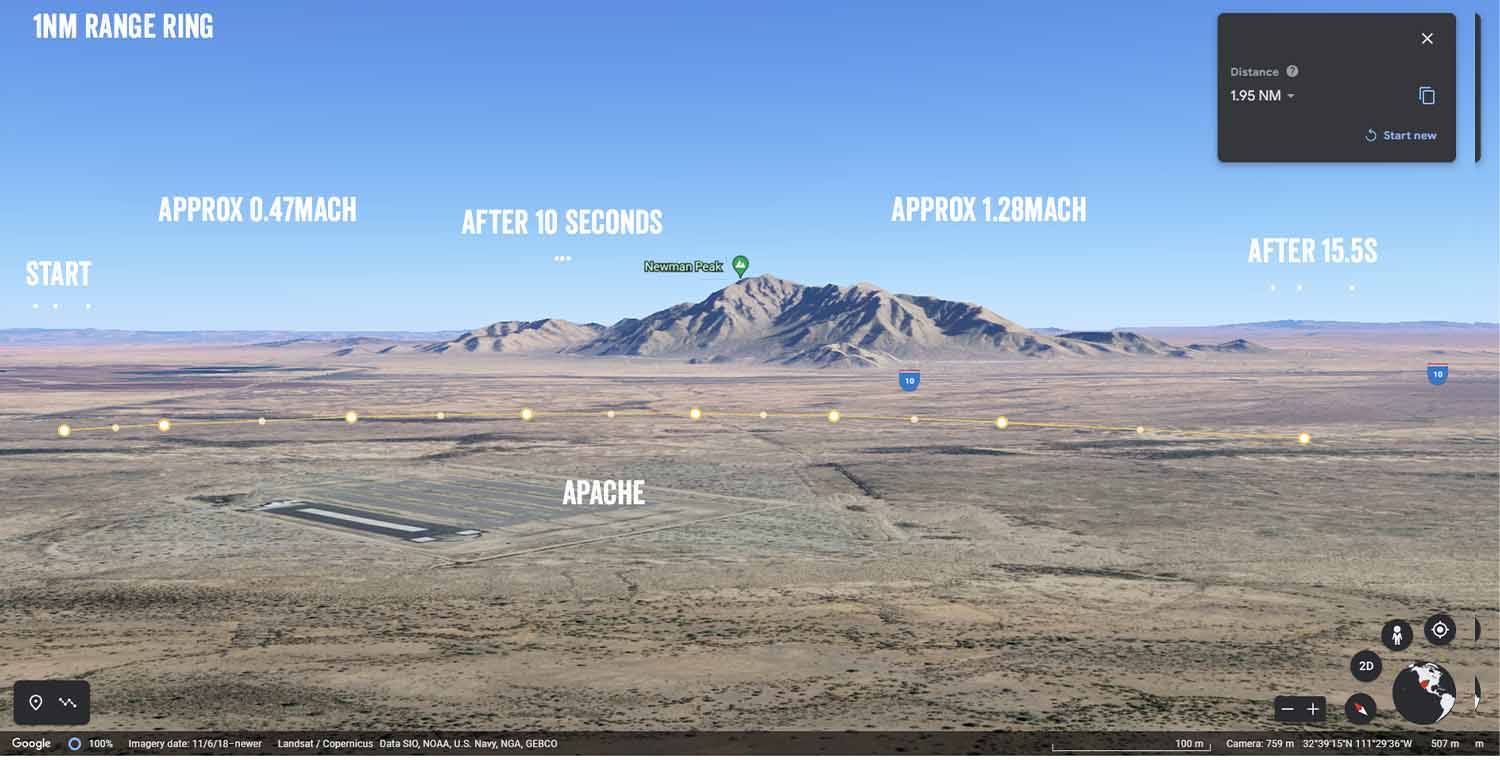
After completing his own analysis of the footage, Lehto provided The Debrief with several additional details that stood out to him, which have led him to conclude the objects display characteristics that appear to defy explanation.
“The tracking rate is exceptionally fast,” Lehto told The Debrief. “Even if they are only a mile away, I calculate they go approximately 1.28M. Well past the speed of sound.”
And according to Lehto, the unusual circular flight path the objects demonstrate near the end of the footage is the strangest aspect of the film.
“The circle-dance maneuver is just not possible,” Lehto said. “They do a full 360-degree turn in less than 3 seconds!”
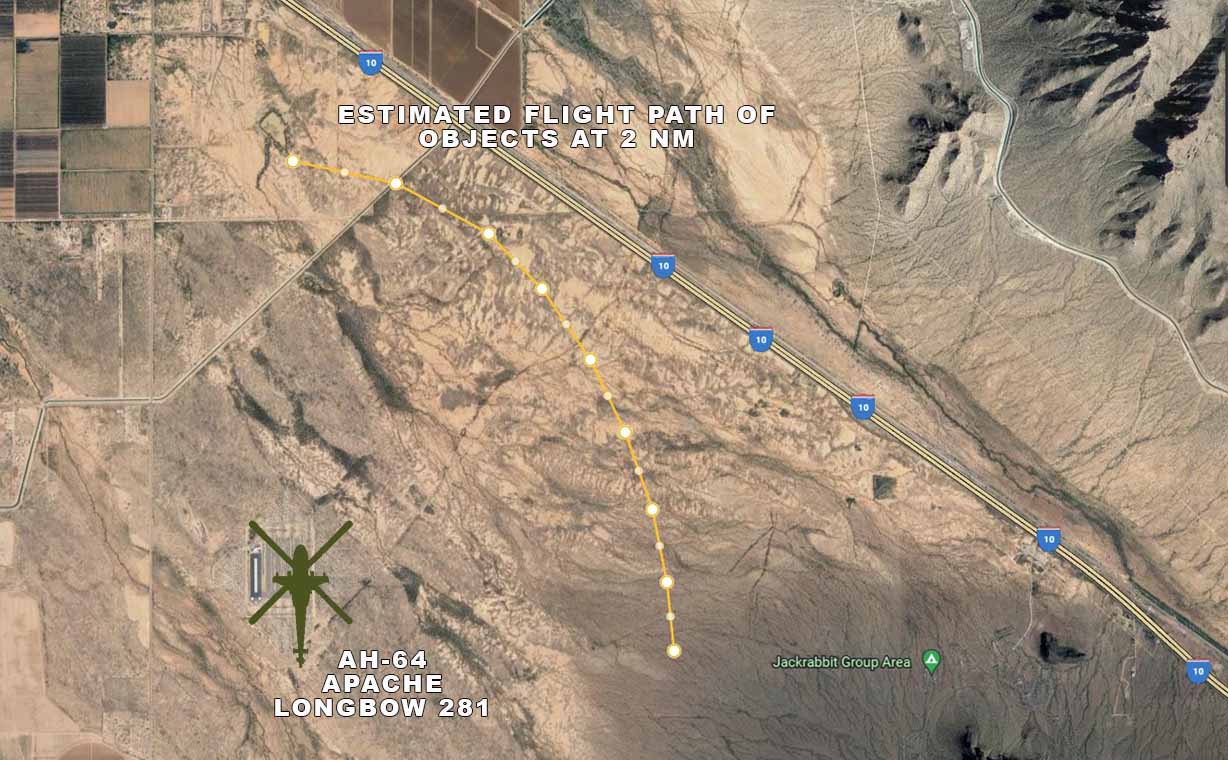
The former fighter pilot expressed confidence that an F-16 is indeed capable of turning at incredible speeds. According to Lehto, “in a level turn, at Mach 0.8, 7 Gs, and 14 deg/sec, the F-16 could turn 360 degrees in about 26 [seconds].”
But in Lehto’s opinion, no F-16—nor any drone or other aircraft in the current known inventory of the United States military—is capable of what the objects are seen doing in the video. He judges that they display “a turn rate that is an order of magnitude faster than one of the fastest turning fighters on earth,” which he estimates to be above 70 Gs.
“I’ve analyzed the video,” Lehto told The Debrief, concluding “it is without a doubt anomalous.”
The Debrief also spoke with former US Navy F/A-18 pilot Ryan Graves, who was one of the witnesses to the now-famous UAP encountered by Navy personnel aboard the USS Theodore Roosevelt between the summer of 2014 and early 2015.
In a phone call, Graves said that at times the unknown objects pilots were encountering off America’s east coast during training exercises at the time would engage in similar bizarre, “non-mechanical” maneuvers.
“It’s hard to describe exactly, but sometimes they would appear to behave erratically. Like group together or change positions while in formation in ways that you wouldn’t see aircraft behave,” said Graves.
“This was in three-dimensional space too. Not just their vector, but sometimes they would also abruptly change altitude.”
To reinforce the need for a UAP task force within DHS, Thompson provided a copy of another 40-minute long UAP video to the nonprofit Scientific Coalition for UAP Studies (SCU), an organization comprised mainly of scientists from various fields who are engaged in the study of aerial phenomena.
Popularly referred to as the “Rubber Duck,” the video taken from a DHS surveillance aircraft shows a misshapen object steadingly flying along near America’s southern border with Mexico.
Records reviewed by The Debrief verified Thompson had made supervisors at DHS aware of his UAP related side-project, as well as the fact that he had provided the purported UAP footage to the SCU for analysis.
“I’ve seen things,” Thompson said. I’ve seen things myself, but unfortunately, I’ve never been able to hit the record button, or have something that was just going to be mind blowing for people.”
“But this one, the ‘rubber duck video’ I thought displayed some really unique characteristics that I couldn’t explain. To me, it didn’t resemble a balloon [and] it didn’t resemble a drone.”
Skeptic Mick West has expressed the view that the object in the “Rubber Duck” video might nonetheless be a drone or runaway mylar balloon, although he acknowledges that conclusive identification based on information in the video alone would be difficult.
“We really don’t know what it is and we probably won’t ever know what it is,” West said in a video on his YouTube channel.
The Debrief reached out to the Scientific Coalition for UAP Studies for comment about the footage, and although the video was pending analysis by an SCU team member, the results of that study had not been completed and made publicly available at the time of publication.
Previously, the SCU conducted an analysis of a separate video originating from within the DHS, filmed over the Rafael Hernandez airport at Aguadilla, Puerto Rico, on April 25, 2013, and obtained by the group later that year.
According to the official who provided the footage to the SCU, who chose to remain anonymous, but whose background information was vetted prior to the analysis, the object appearing in the video produced no squawking transponder signal which would have alerted air traffic control nearby about its presence over the airport.
“Fortunately an airborne U.S. Customs and Border Protection aircraft captured the object on infrared video,” a portion of an extensive report on SCU’s findings states.
Rich Hoffman, an executive board member of SCU who has worked professionally as a defense contractor for more than two decades, says that analysis revealed characteristics about the object that weren’t easily explained.
“It doesn’t have any kind of thermal signature that you would expect,” Hoffman says, who noted that the characteristics displayed by the object in the footage are not consistent with how a balloon or bird would normally appear through thermal imaging systems.
“We got its flight path nailed down,” Hoffman says, adding that SCU “deduced that the speed varied… from about 80 to 85 miles per hour.” Hoffman also notes that the SCU had to account for the parallax effect regarding the object’s movement, which can give the appearance of a faster-moving object due to its relationship with the background based on the camera angle.
“It was a relatively small object,” Hoffman adds, noting that SCU’s analysis determined it had likely been between two and three feet in diameter. The SCU’s complete analysis can be read online at its website.
Thanks in part to the Department of Defense and Congress’s continued interest in collecting data on UAP, things seemed to be progressing–albeit at a snail’s pace typical of government bureaucracy–in Thompson’s attempt to establish similar efforts within the DHS.
However, following unforeseen medical circumstances, Thompson suddenly found himself facing early retirement from his more than 20 years of combined federal service.
Fearing his efforts to have a formal process within DHS to collect and investigate UAP incidents might see additional setbacks, Thompson took action similar to others who have faced such obstacles related to the often taboo topic: he chose to publicly release some of the videos he had obtained showing DHS or military encounters with UAP.
“The videos aren’t classified and they don’t have any nexus to anything related to smuggling,” Thompson emphasized. “So they fit in this weird gray area that Border Patrol really didn’t care about.”
“When I got the very first video, the rubber duck video, I asked him (my boss) directly, ‘is there any reason why I can’t share this with anyone?’ Thompson told The Debrief. And he told me point blank, ‘No.’”
After obtaining permission to share the videos, to raise public awareness Thompson reached out to Andy Marcial, who runs a UAP-related Instagram account called NY UAP Discussions.
“I’ve always helped out the little guy, that’s always been something that’s been instilled in me from an early age,” said Thompson. “And, you know, I looked at Andy as a little guy, you know, when it came to the UFO community. That was why, you know, I reached out to Andy to see if he wanted to get these videos out.”
Marcial told The Debrief that he had been surprised when Thompson reached out to him with the footage.
“At first I was reluctant to believe it. Of all the people, why me?” Marcial said in a call with The Debrief, chuckling as he described the first time Thompson reached out to him. “After seeing the videos though, I realized that this was something very important. That people needed to see it.”
Marcial, choosing to release three of the DHS videos he received, gave them the titles “Rubber Duck,” “A-10,” and “La Bruja.”
What the objects depicted in the videos actually represent remains a matter of debate. What can be verified is that each was captured using sophisticated aircraft imaging systems, and that the pilots or aircrews had no explanation at the time for what was seen. Categorically, the objects in the videos simply remain unidentified.
The videos were among the first to be made publicly available showing purported UAP encounters captured by government systems since three similar videos, obtained by U.S. Navy personnel, were released in late 2017.
To his surprise, Marcial also found himself a target of criticism, on account of both the interpretation by some that the videos might convey balloons or other prosaic objects, as well as apparent suspicions over Marcial’s relatively recent entry into the online “UFO community.”
“It was a massive disappointment,” Marcial said. “It was really hard to try and do the right thing and get this stuff out there, then have people act like they were upset or start criticizing me.”
Marcial says he doesn’t ultimately know what UAP represents, but that the implications could be seismic; so long as the potential remains for exotic possibilities.
“There is too much negativity in the world, too much hate, too much fighting, too much bickering, and way too little love, empathy, and unity,” Marcial says. “Maybe if we found out we aren’t alone in the universe it would change perspectives and views so that the next generation will usher in a new era for mankind.”
Undeterred, Marcial hopes that further releases like the Apache video and further inquiries by lawmakers and government officials will motivate others to take the subject of UAP seriously.
“I would like for academics, scientists, and the general public to not only take the subject seriously, but also understand that there could be more to reality than what we currently comprehend,” Marcial says.
“We need to study and investigate this phenomena to not only understand UAP, but also reality as a whole.”
More than any personal interest he had in UAP, Thompson says what drove him to begin collecting information about what his fellow DHS employees were seeing had been a lack of any formal reporting structure for such sightings.
“Guys are seeing stuff and they didn’t have a means to report it,” he says. “And that’s what brought me more into this than anything.”
Thompson hopes that exposing UAP encounters, like the one recorded by Apache helicopter pilots showing airborne objects performing unlike any known aircraft, may further encourage government officials to take UAP incidents seriously.
“It’s been such a taboo subject for so long, especially in the law enforcement community, especially in the military community,” Thompson says. “I don’t care if it’s a UFO or a Chinese drone, it should get reported to the correct authorities.”
Speaking on background, three separate U.S. defense officials familiar with the government’s current UAP investigations said the encounter by the Apache pilots in 2018 was not reported to either the UAP Task Force, or its sucessor program, the Airborne Object Identification and Management Synchronization Group (AOIMSG).
Defense officials The Debrief spoke with said the lack of knowledge was likely due to the fact that new UAP reporting procedures were still being formalized in 2018. Likewise, the officials said the incident highlights how problems still exist in trying to coordinate centralized UAP reporting practices amongst all government agencies.
“It definitely appears to be anomalous,” said one senior defense official who viewed the Apache video and was familiar with the work of the UAP Task Force. “If it had been reported right after it occurred the task force could have likely been able to obtain significantly more data,” the source told The Debrief.
When provided with the analysis by former F-16 pilot Chris Lehto of the Apache incident, the same defense official said they considered it a “great analysis.”
A recently retired senior U.S. Air Force officer agreed to examine the Apache video, under the condition of anonymity.
The Air Force officer, a former pilot that has held various command and staff positions throughout their career, said the objects seen in the video “did not seem to comport with the flight characteristics of any known aircraft platform, although more analysis is needed to confirm this.”
“I’m not going to get into specifics, but unequivocally, I know for a fact that the government has some extremely compelling evidence on UAP. Much more significant than what has been released so far, including the examples provided during the recent public Congressional hearing,” the former Air Force Officer also said.
“This Apache video appears to show UAP behaving in ways that suggest non-mechanical flight. It would be interesting to know if there is other evidence that demonstrates UAP behaving in ways that are inconsistent with mechanical flight.”
The Department of Defense has consistently declined to discuss any details about specific UAP incidents. The Customs and Border Patrol Public Affairs Office did not respond to several requests by The Debrief for comment.
As for the videos, Thompson says they are just a small sample of the types of “unidentified” things National Guard pilots, CBP agents and other DHS personnel regularly encounter during the course of their duties.
Despite the wide range of expertise he and his fellow agents develop during the extended hours they spend using the most state-of-the-art equipment available to them, Thompson says they still cannot determine what they are seeing in these videos.
“Our guys are out there every day for, you know, 12 hour shifts, staring at that screen, trying to scrutinize a cow from a jackrabbit to a person walking to a bird flying in the sky, to a ultralight, to a helicopter, to the A-10s,” says Thompson.
“I personally have 1000s of hours behind the screens,” Thompson says. “So, if I see something and I don’t know what it is?”
He pauses, weighing his words with a care and discernment evident of man with Thompson’s many years in official service.
“I’m telling you,” he finally says, “it’s got me stumped.”
Footage discussed in this article will be featured publicly in a science-based panel discussion at the forthcoming UFO Disclosure Symposium in Vernal, Utah. The Debrief will be participating as a media sponsor for this event.
Tim McMillan is a retired law enforcement executive, investigative reporter and co-founder of The Debrief. His writing covers defense, national security, and the Intelligence Community. You can follow Tim on Twitter: @LtTimMcMillan. Tim can also be reached by email: [email protected] or through encrypted email: [email protected].
Micah Hanks is Editor-in-Chief and Co-Founder of The Debrief. Follow his work at micahhanks.com and on Twitter: @MicahHanks.
Christopher Plain is the News Editor and journalist with The Debrief. Connect with The Debrief’s Science Editor Christopher Plain on Twitter @plain_fiction
